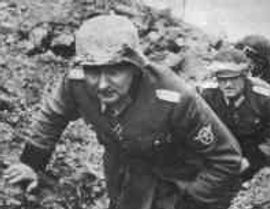
SOUTHEAST LIVING HISTORY SOCIETY
WWII
KAMPFGRUPPE MECKLENBURG
2nd SS "Das Reich"
Pioneer * Infantry * Signals * DRK
HISTORICAL REENACTORS






UNIT IMPRESSIONS

SCHULTZPOLIZEI (Police)
The Deutches Rotes Kreuz (DRK) Helferin was essential to the war effort by tending the sick and the wounded and assisting surgeons during operations.
These nurses contributed significantly by keeping the post-injury mortality rates as low as possible despite the conditions.
They had to deal with a lack of electricity, no running water, dust and dirt, and a shortage of supplies such as instruments, suture material, and sterile supplies.
DRK nurses are generally depicted in ward dress with a starched cap and white apron. The red cross arm band and DRK brooch were distinct to the DRK.
These brave women served in occupied towns often in abandoned hospitals, in overcrowded facilities under attack from the Allies, and even in front line field hospitals as a rear echelon unit. More than twenty DRK personnel were awarded the Iron Cross for heroism under fire.

NACHRICHTENHELFERIN (Signals)
DRK (Red Cross)
Females in Germany during WWII were encouraged mostly for domestic responsibilities. With the demands of war women's roles expanded. Women were primarily in clerical and secretarial positions initially. Eventually females became railway conductors, signals operators, anti-aircraft crew members, air raid warning service workers, customs agents, and teletype operators.
Nachrichten helferinnen were female signals auxiliary workers. Women's roles continued to expand thoughout the war including serving in battle zones. It was not until August of 1944 that woman in military uniforms were granted legal status as combatants.
The female signals personnel were switchboard operators, radio operators, handled secretarial communications, worked listening posts, and were teleprinter operators.
The insignia for signals is a lightning bolt (blitz). Leading to the nickname "Blitzmaedchen".

The "Schupo" were rural police and the "Feldgendarmerie" were military police.
The primary duties of Schupo were:
-
Traffic control
-
Area patrols
-
Airfield and port security
-
Regulation of cattle diseases
-
Enforcement of hunting, fishing, business, agricultural and forestry regulations
The "Feldgendarmerie" were in the rear echelon of the combat troop movement. Their primary duties were:
-
Military traffic control
-
Act as and establish temporary town majors and army straggler's posts
-
Secure deserters, POWs, and refugees
-
Guard valuables
-
Control partisan activity and civilian weapons
-
Organize civilian labor
-
Maintain military and civil signs


